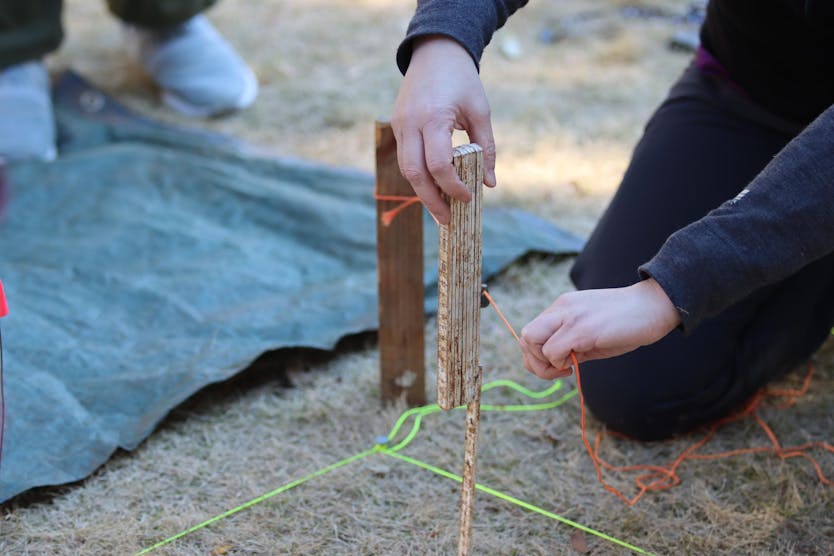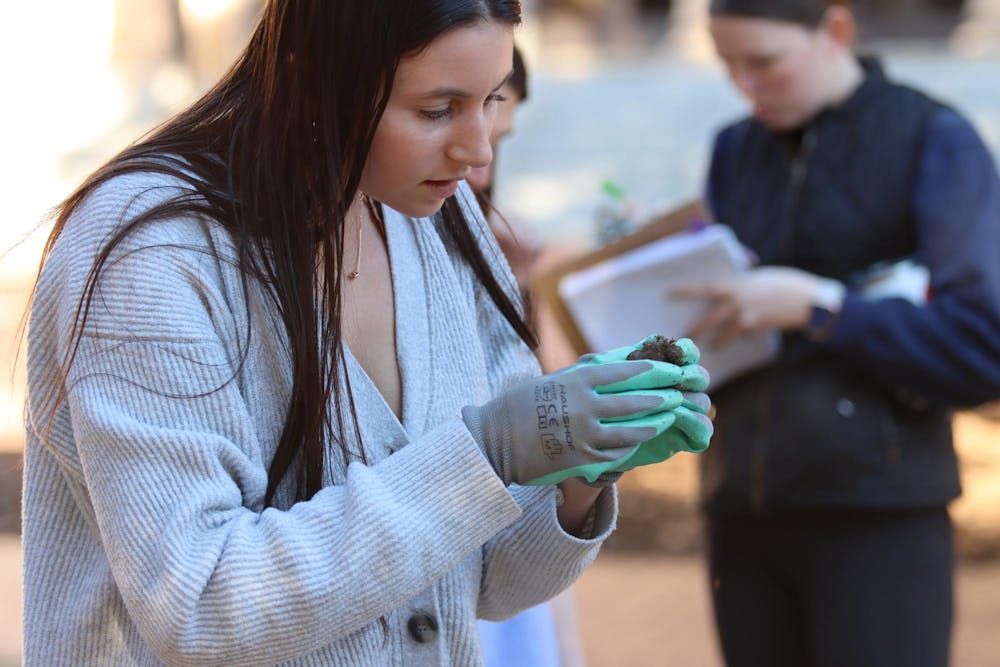A USC Honors College class is digging on the Horseshoe for artifacts that could originate from campus before the Civil War. The project is the first time in 51 years the university has granted permission for students to conduct excavations in the area.
The class, titled "Digging Through the Past: Exploring the Archeological Resources of USC," is looking for items that could help tell the stories of enslaved individuals who once resided on campus.
Anthropology professor Katherine Goldberg, who teaches the class, said there is very little research about these individuals and anything that the class finds could help give insight into their lives.
The most notable objects the students have found so far are nails, ceramic pieces, glass, an unidentified metal object and a seashell, which have not yet been analyzed on how the objects could connect to the individuals that resided there.
“A lot of people think there’s (mystification). 'Oh, you’re going to get really exciting, exotic artifacts,'” Goldberg said. “But we’re working in areas where we expect to find a lot of trash.”
Jill Found, a Ph.D. history candidate, is conducting a research project on the experiences of enslaved individuals at USC.
They spoke to Goldberg’s class about the lives of several enslaved people who resided on the Horseshoe when USC was known as South Carolina College prior to the Civil War.
Found said it is likely that most of the buildings on the original campus were built by the enslaved workers. Some of the individuals were bought and owned by the university while others were personally owned by the professors. A number of tasks they would carry out included cleaning the dorms and classrooms, cooking and serving meals and taking care of scientific equipment in the chemistry lab, they said.
Some of the documents Found used to verify their research are recorded in university archives and personal records.
The class's excavations could potentially help their research, Found said.
“I think that archeology is a really meaningful way to understand the lives of enslaved people because they’re often erased or left out of the historical documentary record,” Found said. “So, archival resources give us another way to learn about their lives.”
Goldberg said an extensive amount of research went into creating the map of the sites on the Horseshoe the class would excavate, including the data from a ground penetrating radar, books on campus history and previous research on enslavement on campus.
Keeping meticulous documentation throughout the entire excavation process is extremely important, she said. For every 10 centimeters that a student digs, another student records what objects have been found so far and the condition of the soil in that layer.
“One of the kind of mantras of archeology is, 'You can only dig a site once,'” Goldberg said. “We are actively destroying data as we recover it because once we’re digging it up, we’re kind of changing the context.”

Anthropology professor Katherine Goldberg shows her students the process of measuring unlevel ground on Feb. 14, 2024. The students look to make a perfect rectangle above the object they previously located on the ground penetrating radar.
Twice a week, the students have lectures on the groundwork that they must do before excavating, such as using a ground penetrating radar to capture images beneath the earth’s surface and creating a map of the site.
Once a week, the students head out to the Horseshoe for a three-and-a-half-hour lab, digging and sifting for objects in the sites that they have mapped out.
The students first use geometry to accurately measure the site where they should dig by looking at the map. Once they’ve marked off the unit, a student gently removes the top layer of grass with a shovel to place it back when finished. The dirt is then shoveled into several different strainers that the students use to sift for objects, which are placed into paper bags.
The students wash each object by hand in the lab to better understand the finding and let them dry for a few weeks, Goldberg said. Then, they examine the objects for any identifying features or patterns.
Tina Sandoval, a second-year anthropology and environmental studies student, said she took the course due to its unique hands-on approach to learning.
Her favorite aspect of the class so far has been Found’s lecture on the history of enslaved individuals on campus, she said.
“Being from Columbia and having Black family, I always knew that enslaved people were a part of the establishment of the university,” Sandoval said. “But I never knew that the university actually did own someone who was enslaved, and enslaved people really do have a more vibrant history or a more notable history with the university than they are given credit for.”
The excavation days are challenging because even though the labs are three-and-a-half hours long, it is not nearly enough time to usually finish the process, she said. The students have also faced weather challenges, such as having to dig while it's raining or with freezing temperatures.
But Sandoval said being friends with her classmates makes the experience easier.
“The good thing is the culture of the class is just so fun and supportive, that we’ve really powered through it,” Sandoval said.
Some of the artifacts the students have excavated are on display in the McKissick Museum. The class will continue to add to it as more are found throughout the semester.
"We're hoping that our work will help make that something we can bring more attention to," Goldberg said. "Again, not in a negative way, but to acknowledge that the stories of the people who were enslaved on campus, of their descendants, are real and deserve attention too."
Correction: A previous version of this article mislabeled the name of the archaeology class. This has been updated to list the correct name.

